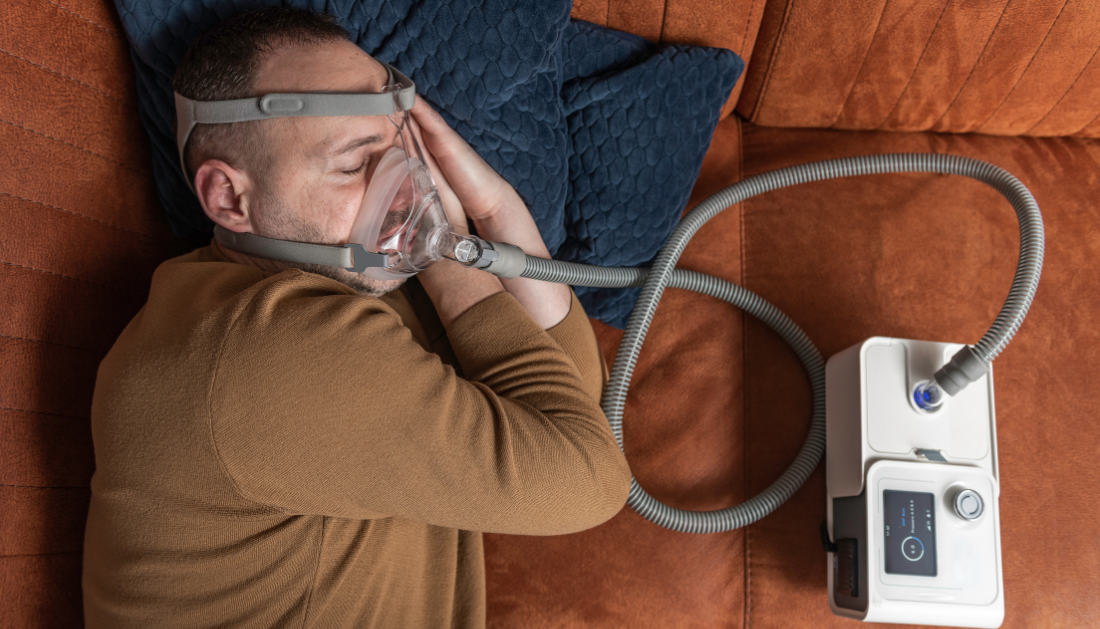

Air Pollution Significantly Increases Sleep Apnea Severity, Large European Study Finds
A major multinational study presented at the European Respiratory Society (ERS) Congress in Amsterdam has revealed a compelling connection between air pollution and the severity of obstructive sleep apnea (OSA). The research underscores the importance of environmental health in managing sleep disorders and highlights a growing need for clinicians to consider air quality as a key factor in patient care.
With more than 19,000 OSA patients included across 25 cities in 14 European countries, this is one of the largest studies to date examining the impact of pollution on sleep-related breathing disorders. The findings offer critical insights for healthcare professionals, including pulmonologists, sleep medicine specialists, and primary care providers, as well as public health policymakers.
Explore All Sleep Medicine CME/CE Conferences and Online Courses
Understanding OSA and Its Health Risks
Obstructive sleep apnea is a highly prevalent but often underdiagnosed condition where a person’s breathing repeatedly stops and starts during sleep. This happens due to airway obstruction, typically caused by the relaxation of throat muscles.
Common symptoms include loud snoring, frequent nighttime awakenings, gasping for air, and excessive daytime sleepiness. Beyond affecting sleep quality, untreated OSA is associated with serious health complications such as:
- High blood pressure (hypertension)
- Stroke and cardiovascular disease
- Type 2 diabetes
- Chronic fatigue and impaired cognitive function
While factors such as age, obesity, and smoking are well-established risk contributors, this new study reveals that air quality plays a critical, yet often overlooked, role in the progression and severity of OSA.
Study Details: How Air Pollution Impacts OSA Patients
The research team, led by Dr. Martino Pengo, Associate Professor at the University of Milano-Bicocca and clinician at Istituto Auxologico Italiano IRCCS, used patient data from the European Sleep Apnoea Database. Participants provided demographic information such as age, sex, BMI, and smoking status, and underwent comprehensive sleep studies to confirm OSA diagnoses.
The team then merged this data with PM10 air pollution measurements sourced from the Copernicus Atmosphere Monitoring Service, which monitors fine particles released from vehicles, industrial emissions, and other sources. PM10 particles are less than 10 micrometers in diameter and are known to have significant negative effects on respiratory health.
Key findings include:
- A statistically significant link between long-term PM10 exposure and OSA severity.
- For every one-unit increase in PM10 concentration, there was an average rise of 0.41 respiratory events per hour during sleep.
- Patients with severe OSA lived in areas with higher average PM10 levels (~19 µg/m³) compared to those with mild or no OSA symptoms (~16 µg/m³).
- The strongest associations were observed in major urban centers such as Lisbon (Portugal), Paris (France), and Athens (Greece).
Dr. Pengo explained,
“This effect may seem small for an individual, but across entire populations, it has a meaningful impact. A slight increase in respiratory events can shift thousands of people into more severe disease categories, increasing their risk of serious health complications.”
Regional Differences and Public Health Implications
Interestingly, the study noted geographical variations in the strength of the correlation between air pollution and OSA severity. While certain cities demonstrated strong links, others showed weaker or negligible associations.
Researchers suggest these differences may be influenced by:
- Local climate conditions
- Types and sources of pollution
- Differences in healthcare systems and OSA screening practices
Professor Sophia Schiza, head of the ERS expert group on sleep-disordered breathing, emphasized the broader implications of the findings:
“For individuals living in highly polluted cities, this study highlights the environmental dimension of OSA care. Tackling air pollution not only benefits the planet but also directly improves sleep quality and respiratory health.”
This reinforces the need for interdisciplinary collaboration between sleep specialists, respiratory care teams, and public health policymakers. By addressing both clinical risk factors and environmental triggers, healthcare providers can deliver more comprehensive and effective OSA management.
Why These Findings Matter for Clinicians and Patients
For clinicians, these results are a call to integrate environmental assessments into their routine evaluations of OSA patients. While treatments such as CPAP therapy, lifestyle changes, and weight management remain essential, awareness of environmental factors can lead to more personalized care strategies.
This also suggests that public health initiatives aimed at reducing air pollution could significantly lower the overall burden of OSA and related cardiovascular complications.
Patients living in highly polluted urban areas may need closer monitoring, earlier screening, and proactive interventions to prevent disease progression.
Next Steps in Research
The study team plans to expand their work by:
- Investigating why the pollution-OSA link varies between different cities.
- Identifying populations most vulnerable to pollution-related OSA worsening.
- Evaluating whether improving air quality can directly reduce OSA symptoms and severity.
As urbanization and industrial growth continue, understanding the intersection between environmental health and sleep medicine will be increasingly vital.
Source:
more recommended stories
 Poor Kidney Function and Alzheimer’s Biomarkers Explained
Poor Kidney Function and Alzheimer’s Biomarkers ExplainedPoor kidney function may influence levels.
 Walking Speed Before Hip Replacement Predicts Recovery
Walking Speed Before Hip Replacement Predicts RecoveryNew Evidence Points to a Simple,.
 Neuroblastoma Drug Combo Extends Survival in Models
Neuroblastoma Drug Combo Extends Survival in ModelsA Promising Shift in High-Risk Neuroblastoma.
 How Soybean Oil Impacts Weight Gain and Metabolism
How Soybean Oil Impacts Weight Gain and MetabolismWhy Soybean Oil May Affect Metabolism.
 Coffee and Cognitive Function: Evidence Review
Coffee and Cognitive Function: Evidence ReviewA new narrative review in Cureus.
 Colorectal Cancer Screening Rates Low in Adults 45–49
Colorectal Cancer Screening Rates Low in Adults 45–49Recent UCLA research reveals that colorectal.
 Gut Immune Cells and Long-Lasting Antiviral Protection.
Gut Immune Cells and Long-Lasting Antiviral Protection.Breakthrough Findings on How Gut Immune.
 Mild Pancreatic Duct Dilatation Signals Higher Cancer Risk
Mild Pancreatic Duct Dilatation Signals Higher Cancer RiskEarly Structural Changes Offer Critical Clues.
 How the Uterus Senses Force During Labor: New Insights
How the Uterus Senses Force During Labor: New InsightsA new study published in Science.
 Fat-Free Mass and Brain Outcomes in Preterm Babies
Fat-Free Mass and Brain Outcomes in Preterm BabiesEarly Fat-Free Mass May Hold the.

Leave a Comment